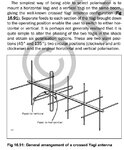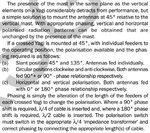yosimitesam
Airman 1st Class
I'm trying to find information on how the Morgenstern ("Morning Star") antenna worked. I have a good understanding of lobing, phased array, and directors/reflectors (Yagi, Lichtenstein, etc.) but I cannot figure out how the Morgenstern gave "direction" indication. I appears to be two dipoles (with reflectors) at 90-degree angles. Are they energized alternately or are they coupled somehow? Are the different polarization planes used in any way? Any info would be useful as I cannot find anything useful on the web. Thanks.


